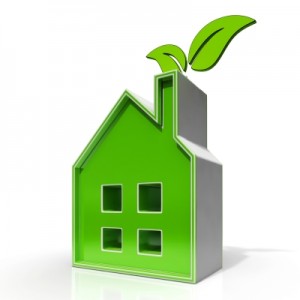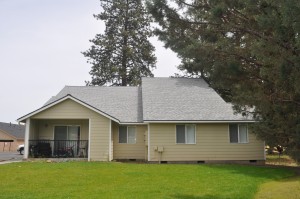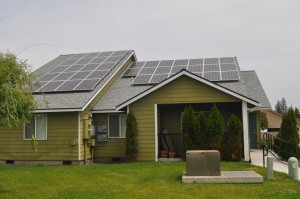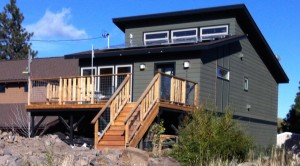 Every conversation about zero energy homes (ZEHs) eventually comes around to the question of “cost.” The negative connotation of added cost and, even worse, “payback” always puts ZEH advocates at a disadvantage. For years, I’ve encouraged advocates to call energy expenditures investments rather than “costs that must be recovered”. So, let’s banish the entire idea of “payback” and “payback period.”
Every conversation about zero energy homes (ZEHs) eventually comes around to the question of “cost.” The negative connotation of added cost and, even worse, “payback” always puts ZEH advocates at a disadvantage. For years, I’ve encouraged advocates to call energy expenditures investments rather than “costs that must be recovered”. So, let’s banish the entire idea of “payback” and “payback period.”
Would anyone judge a stock investment or an interest bearing bank account by calculating how long it would take the earnings to equal the principal? No, that would be absurd. Likewise, it’s counter-productive to consider funds used for energy improvements to be costs. They are investments with a financial return that is both significant and predictable – both immediate and long-term.


Which of these two houses cost more overall?
When you spend money to reduce energy use, you receive a tangible financial benefit that begins the first month and continues for as long as you own your home. Let’s say that you’re building a new zero energy home. You can calculate how much it will cost to increase insulation, reduce air leakage, improve equipment efficiency and add photovoltaic panels. In most cases the investment will be in the tens of thousands. This investment will return immediate benefits whether you finance the purchase or pay with cash.
To illustrate the idea, let’s use an example of an investment of $40,000 in energy efficiency measures needed to bring a new house to zero energy. In my area, financial incentives from the electric utility, state and federal government cover just under half and reduce the amount to $21,000. If you finance this home with a conventional 30-year mortgage, with current mortgage interest rates at 4%, you’ll pay $50 per month for each $10,000 you add to your principal amount. Let’s assume that you financed the additional construction cost of $21,000 (after incentives), then your monthly added payment for energy improvements would be $100. Based on energy modeling, let’s, assume that the home will save $200 per month for energy.
That $200 return starts the first month you live in your house, and in this example, it exceeds the added monthly mortgage payment whether incentives were used or not.
| Financing Summary | Additional Investment | Monthly Payment (30 yrs at 4% ) | Monthly Energy Savings | Net Return |
| With Incentives | $21,000 | $100 | $200 | $100 |
| Without Incentives | $40,000 | $192 | $200 | $8 |
You can also turn this calculation around by first looking at savings and then calculating how much money you could afford to invest. By building a home that saves $200 per month, you could afford to invest $40,000 in energy improvements.
In return for your investment, you pay nothing or very little for energy from the day you walk in the door. The monthly savings almost always offset the additional mortgage payment. Many cost-effectively built zero energy homes will realize a profit on their investment during the very first month, as in this example. It’s a very simple idea. If the monthly energy savings exceed the monthly financing cost, you win!
Businesses do this all the time, and they call it “leverage”. They borrow money to make an investment. If the return is higher than the outlay, they make a profit. If you think of energy improvements in this way it opens a new way of thinking about ZEHs.
While the figures used in this example will apply to many areas of the U.S., your return will depend on individual circumstances. Home size, local construction costs, local energy costs, interest rates, and locally available incentives are key factors that will need to be considered. The key point to remember is that your investment has an immediate return, as well as a long-term return.
With financial investments, in addition to receiving interest and dividends, eventually, you will withdraw the principal, when you close your bank account or sell a stock. How does that compare with money invested to improve the energy efficiency of your home? How do you recover the capital?
Although there will always be real estate price fluctuations, it’s generally true that homes will grow in value over time. A number of studies show that energy efficient homes, especially ones with solar collectors, sell faster and receive higher prices than conventional homes in many areas of the country, making highly energy efficient homes a positive real estate investment.
So far, I’ve shown you the return on investment starting with energy saving “dividends” on move-in day and ending with a higher return on the day you sell your home. Another security you get with a ZEH is that they provide insurance against rising energy costs. Electricity price inflation has been steady at about 3% for decades and will undoubtedly continue to increase. Natural gas and petroleum prices are more volatile, but who wants to chain their home to unstable, carbon emitting fossil fuels for decades to come?
Also there are many important non-monetary returns with ZEHs that should be taken into account. These homes are more comfortable, healthier, quieter, more durable, and kinder to the planet.
The concept of “payback period” complicates and obscures both the solid financial returns from investing in a zero energy home and distracts from the many non-financial benefits of the home. So let’s banish “payback” from our vocabularies.
Real World ZEH Example
 For a real world example. I’ll use my own ZEH. It was completed in September of 2015 in Bend, Oregon (USDOE Climate Zone 5). It’s a small house, a bit more than 900 square feet. The building shell has extra insulation, including 10-inch thick walls, and very low air leakage (1.0 ACH50). There is a ductless heat pump for space heating and a heat pump water heater. Efficient appliances include a two-burner induction cooktop. To power all this is a 4.3 KW photovoltaic (PV) system. I kept careful records of all the construction costs and, for comparison, estimated the cost to build the house to a minimum code efficiency level.
For a real world example. I’ll use my own ZEH. It was completed in September of 2015 in Bend, Oregon (USDOE Climate Zone 5). It’s a small house, a bit more than 900 square feet. The building shell has extra insulation, including 10-inch thick walls, and very low air leakage (1.0 ACH50). There is a ductless heat pump for space heating and a heat pump water heater. Efficient appliances include a two-burner induction cooktop. To power all this is a 4.3 KW photovoltaic (PV) system. I kept careful records of all the construction costs and, for comparison, estimated the cost to build the house to a minimum code efficiency level.
The investment in energy efficiency measures required to bring the house to zero energy was $39,900. Financial incentives from the electric utility, state and federal governments covered just under half and reduced my cost to $21,206. However, I was able to reduce construction costs by doing most of the air sealing and installing the ventilation system myself. Including sweat equity, my costs for energy improvements dropped to $16,085 so my added monthly mortgage payment was only $77.00 . My energy model predicted energy savings worth $92 per month, Adding the higher mortgage payment and subtracting these monthly energy savings, I’m making a profit of $15 per month. Each year as energy prices increase, I will be making a little more each month. And if I ever were to sell my home I would get a price premium for the energy upgrades it contains and quality of life it provides. And in the meantime I am living in a home that provides more comfort, more quiet, fresher air and more durability.
–Bruce Sullivan, building science consultant, www.basezero.biz

Anders Lewendal says:
Sir: I do support efficient homes and recently finished a qualifying Passive Home. ACH was .35. I have also built over 20 EnergyStar Homes plus a LEED certified home.
Some of my clients do spend extra for comfort and the idea of saving the planet. And you are correct that we should bannish the idea of the "pay back period". We should look at energy improvements against alternative costs such as building closer to work or buying a more efficient car. We should also measure the "investment" in energy savings against typical investments like Treasury Bills. If we cannot beat a T bill with an improvement we should reconsider. We might use those funds for other more efficient uses.
You example of saving $8 per month on a $40K investment yields a .0024 percent return on equity. My PV system returns about .03 percent without subsidies.
Please encourage your readers to consider the alternative costs when making "investments".
Anders Lewendal